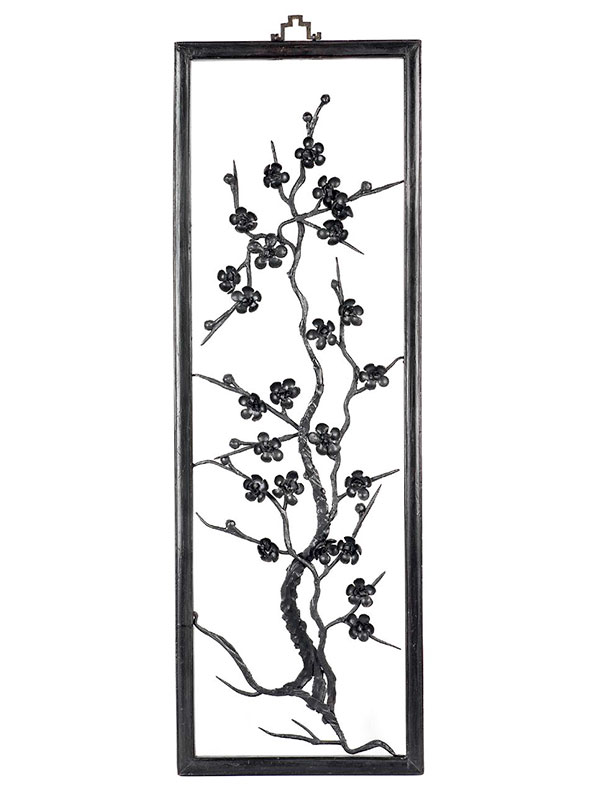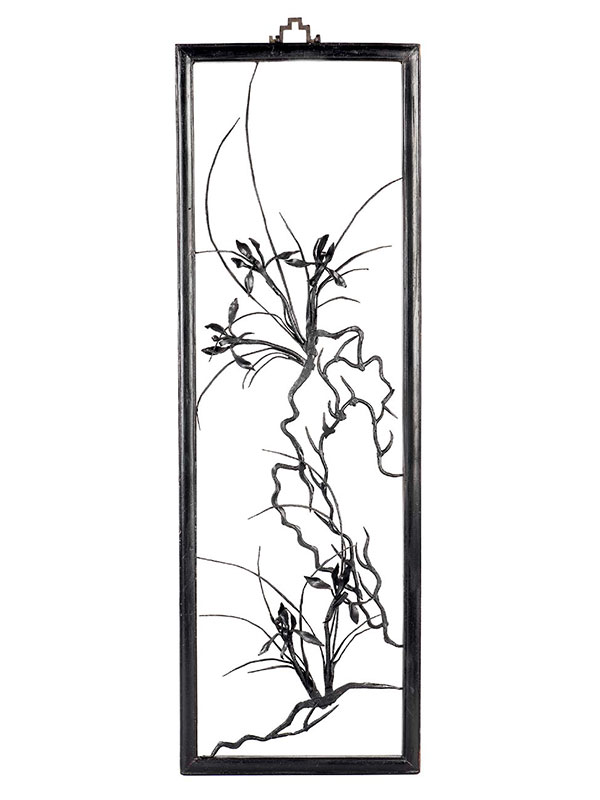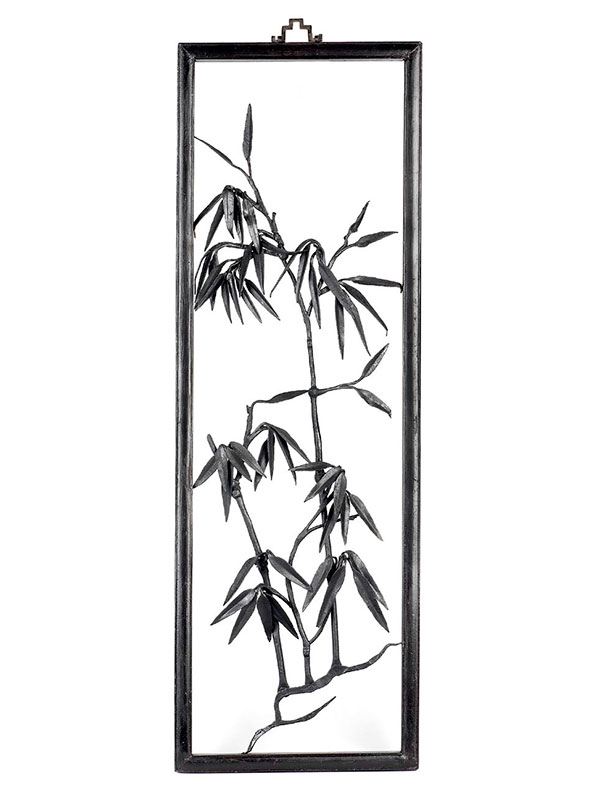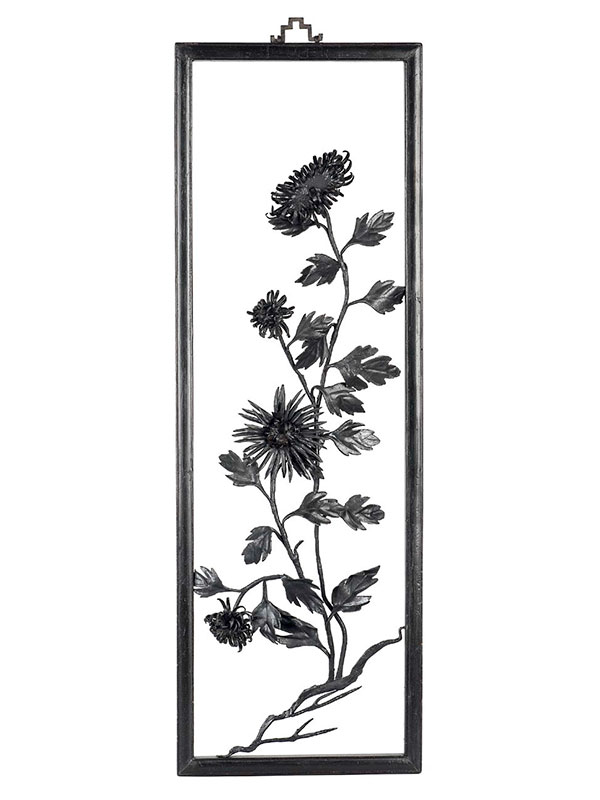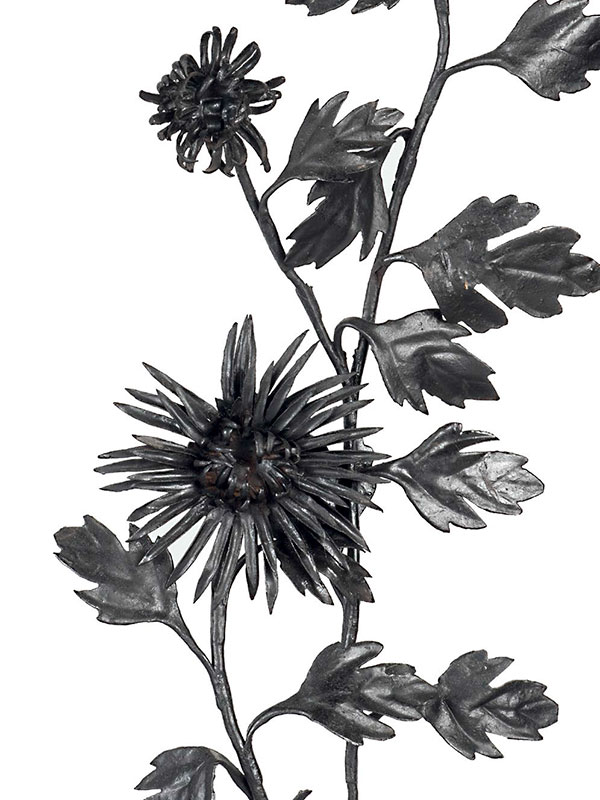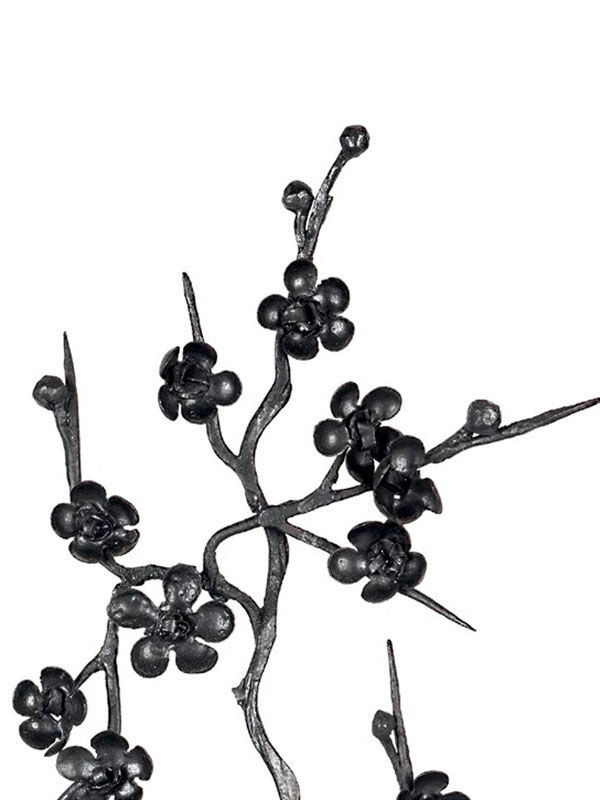Four iron paintings, tiehua
A set of four iron paintings, depicting respectively a gnarled branch of flowering prunus, orchid, strands of bamboo and chrysanthemums. The delicately rendered plants are each composed of wrought iron elements, which are made individually and jointed together with bolts. Each iron painting is contained within a hardwood frame with a ruyi-shaped handle.
The combination of four types of flowers and plants representing the four seasons of the year, is also known as Sijunzi which means Four Gentlemen or Four Plants of Virtue.[1] The technique of crafting iron paintings was derived from hammered iron candleholders in the shape of flowers made for Buddhist temples, which was further developed in the 17th century in Wuhu city of Anhui province; its name in Chinese tiehua literally translates as ‘iron flowers’. The invention of tiehua is attributed to a Wuhu blacksmith, Tang Peng (also known as Tang Tienchi, 1644 – 1722), who was inspired by Chinese ink paintings depicting landscapes painted by Xiao Yun-Cong (1596 – 1673).[2] It was not until the 18th century that the art of tiehua was first noticed by scholars in Beijing, who started to laud its beauty in poems. A set of four 18th century iron paintings representing the seasons is in the collection of the British Museum, one of which, depicting chrysanthemums, is illustrated by Jenyns.[3] A comparable set of four iron paintings dated to the 17th century was included in the exhibition, The Chinese Scholar’s Studio: Artistic Life in the Late Ming Period at the Shanghai Museum in 1987.[4]
- Welch, P. B. Chinese Art- A Guide to Motifs and Visual Imagery, Tuttle Publishing, 2012, p. 21
- Jenyns, R. S. and Watson, W. Chinese Art, vol. II, Phaidon, Oxford, 1980, p.104
- Jenyns, R. S. and Watson, W. op. cit., no. 72, p. 104
- Li, C. T. and Watt, J. C. Y. eds. The Chinese Scholar’s Studio: Artistic Life in the Late Ming Period – An Exhibition from the Shanghai Museum, Thames and Hudson, New York, 1987, no. 68, pp. 120-1
鐵畫 《四君子》
清 十八 – 十九世紀
單幅 高(含框):66.5 公分 寬(含框):22 公分
長方形鐵畫四幅,裱於木框。每幅鐵畫各自描繪梅、蘭、竹、菊,合稱花中「四君子」– 梅花寒
冬綻放,傲骨堅貞,蘭花幽然清雅,翠竹節氣凜然,澹泊明志,菊花清風淡逸– 均為文人雅士追
求之精神表率。鐵畫則以精湛工藝,以鐵為墨,以砧為紙,鍛鐵為畫,細膩重現植物花卉細節。
安徽蕪湖鐵畫於清康熙年間自成一體,至今工藝仍享譽國際,鍛製技藝於2006年經中國國務院批
准列入第一批國家級非物質文化遺產名錄。倫敦大英博物館與上海博物館皆有蕪湖鐵畫收藏。

